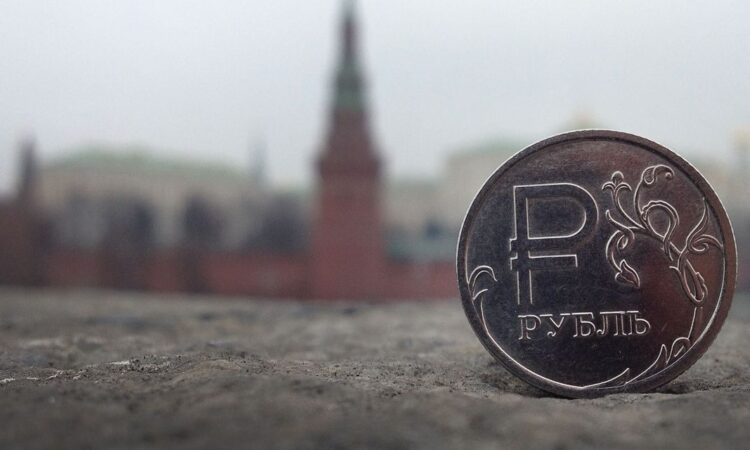
Falling oil prices and fears about capital flight helped push the Russian ruble to its weakest level against the U.S. dollar in a year on Monday, the latest milestone in what has been a dramatic reversal of fortune for the currency.
The ruble showed surprising resilience against the U.S. dollar last year despite Russia’s invasion of Ukraine, with the dollar falling 2.7% against the Russian currency in 2022.
But a changing backdrop both at home and abroad has weighed on the ruble since the start of the new year, currency analysts and economists said.
Since Jan. 1, the greenback has appreciated by more than 12% against the ruble, according to FactSet data. This makes the ruble the second-worst-performing major emerging-market currency after the Argentine peso, according to Marc Chandler, chief market strategist at Bannockburn Global Forex.
On Monday, the U.S. dollar
USDRUB
rose 0.7% to 81.55 to log its highest level against the ruble since April 11, 2022, according to FactSet. That’s on top of the dollar’s 4.5% advance against the Russian currency from last week, its biggest weekly advance since September, according to FactSet.
While the Russian government has historically kept a tight grip on its currency, international sanctions and falling oil and gas prices have made stabilizing the ruble more difficult, said Robin Brooks, chief economist at the Institute for International Finance, in commentary emailed to MarketWatch.
As a result, movements in oil prices are having a bigger impact on the ruble.
Other economists highlighted fears of capital flight and additional concerns that have been exacerbated by U.S. and European efforts to isolate Russia’s economy.
“The international financial chokehold on Russia was maybe slow to take effect, but it’s having the desired impact,” Chandler said.
Falling oil and gas prices are also depriving the Russian government of much-needed revenue, both Chandler and Brooks said.
Oil and gas budget revenues fell by 45% during the first quarter compared with the same period a year earlier, according to Russia’s TASS news agency. The report blamed a decline in the price of Ural crude, the benchmark that covers Russia’s output, as well as a drop in natural-gas exports.
The ruble’s decline since the start of 2023 has been swifter than some economists had expected. Capital Economics had forecast the ruble to weaken to 75 per U.S. dollar by the end of 2023, but the ruble has already fallen well below that level.
An aggregate forecast compiled by Bloomberg had called for the ruble to end this year at 80 to the dollar. That has also proved too optimistic.
A recent report in the Russian press claiming that Russian President Vladimir Putin would allow domestic gas producer Novatek to purchase Shell’s
SHELL
stake in the Sakhalin-2 liquefied natural-gas project in the Russian Far East for 95 billion rubles, or nearly $1.2 billion, has also weighed on the ruble, according to Chandler.
That’s because traders expect that Shell would try to exchange any ruble proceeds from the deal for dollars or euros. Shell didn’t return a request for comment from MarketWatch.
If expectations for a global recession prove correct, this could add even more pressure to oil prices, and by extension to the ruble, Brooks said.
Even the recent production cut announced by the Organization of the Petroleum Exporting Countries and its allies, including Russia, has failed to induce a meaningful lift in crude prices. Brent crude
BRN00
for June delivery fell 94 cents, or 1.1%, to settle at $84.18 a barrel on ICE Futures Europe Monday. Brent crude prices have fallen by roughly 20% since April 1, 2020, according to FactSet data.
Of course, the weakness in the ruble does come with a silver lining for the Russian economy, which has struggled since the start of the country’s invasion of Ukraine in February 2022.
“A weak ruble makes Russian goods very cheap,” Chandler pointed out.




